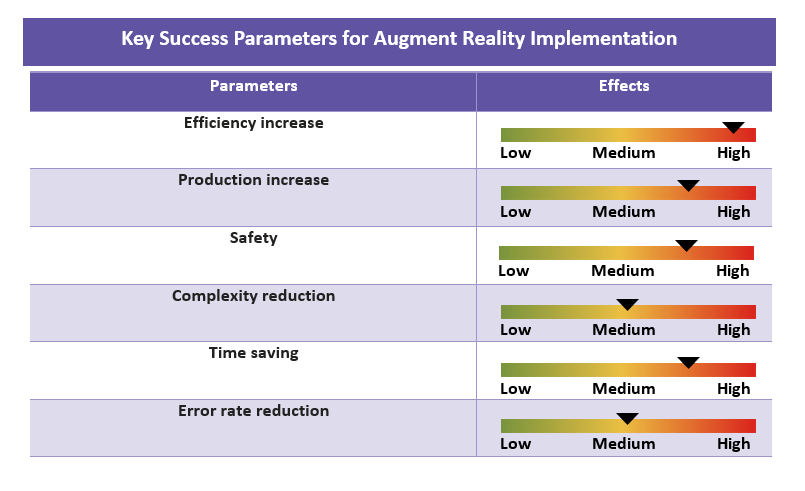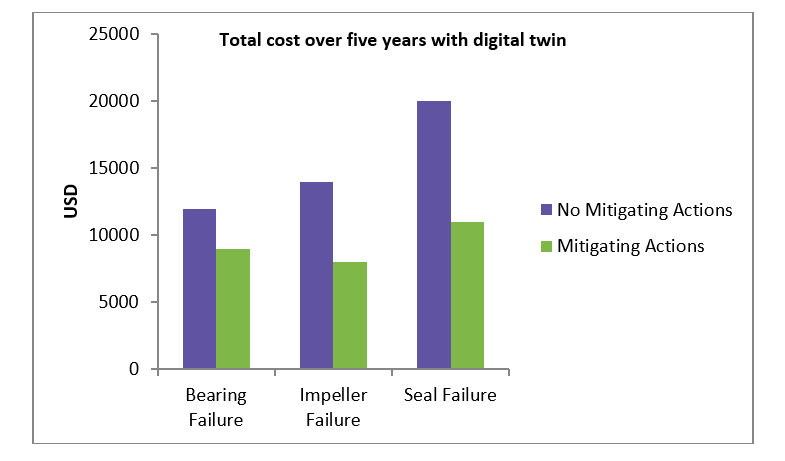
Technological Trends for Sustainable Maintenance Services

Abstract
Sustainability in maintenance services has emerged as a new opportunity for companies engaging with service providers using the sustainability strategy. It promotes a balance between the economic, environmental and social dimensions. Companies shall not only focus on reducing cost in repair services and materials consumed, but also in environmental terms—such as reducing greenhouse gas emissions and energy consumption—and social issues—such as worker’s health and safety. Through this article
- The user shall understand the concept of sustainability and market trends that are presently occurring in the maintenance service market.
- The user shall understand the latest technology trends offering made by suppliers and how these can be effectively used in maintenance activities.
Sustainability in Maintenance Services
Building a sustainability model in maintenance services shall offer companies engaging with a contractor/service provider an opportunity to promote a balance between the economic, environmental and social dimensions. Some of the key benefits of following sustainable maintenance activities are mentioned in the table below:
Key Benefits of Sustainability in Maintenance Services
| Benefits | Environmental | Economic | Social |
|
Internal |
|
|
|
|
External |
|
|
|
Key Success Factors in Sustainable Maintenance Services
Suppliers intend to design a sustainable maintenance plan for the facilities, with the objective of improving maintenance actions in the manufacturing system. There are four important success factors that determine the sustainability in maintenance services:
- Selection of the maintenance strategy
- Training of employees involved in maintenance
- Control of production equipment to generate less waste
- Optimization of the materials consumed during the maintenance actions
Maintenance Strategy:
The selection of the appropriate maintenance strategy minimizes the probability of failures in the production system and its consequences related to safety, economy and environment—for example, predictive maintenance using the sensors to forecast the breakdown of the equipment.
Training:
The training given to the employees involved in maintenance allows sustainable practices to be taken, minimizing the sector's effect on sustainability—for example, efficient training methods and employing the right personnel for the right job reduce the risk of accidents and downtime.
Disposal of Waste:
Control of waste is essential for the reduction of environmental pollution, noise from industrial activities, and liquids and solids generated—for example, efficient disposal of chemical waste from the plant will have less effects on the environment. Proper disposal as per the guidelines from the local body are essential to avoid fines and reduce the environmental impact.
Optimization:
The optimization of the materials consumed during maintenance actions is improved when employees are more aware of sustainable practices.
Buyers need to promote a balance between economic, environmental and social dimensions of sustainability concepts. This balance has to be approached in maintenance strategies geared toward ensuring better control of maintenance costs, better quality of products and services, a decrease in the environmental impacts caused by maintenance and disposal.
Key Technologies for Sustainable Maintenance Services
Some of the technologies that are key for sustainable maintenance services include augmented reality and digital twin for predictive maintenance, as described below.
Augmented Reality

Augmented reality for maintenance and repair is an emerging technology. Here, the employee’s view is augmented with additional information that would help effectively resolve the conflict. Automotive, pharma, oil and gas, aerospace and industrial sectors are the major adopters of this technology.
Key Factors to Consider while Procuring Augmented Reality Smart Glass
- Able to capture photos, record video and save locally on the augment reality smart glass or remotely
- Flexible in sharing the screen and sending documents to the worker’s view
- Zoom-in and -out options to examine defects
- Ability to annotate with explanatory notes
- Ability to initiate calls from both the employee or expert side
- Ability to include multiple participants
- Access to remotely control microphones and camera
Benefits of Augment Reality Systems
- Improves speed, accuracy and economics of service technicians while reducing frustration and bottlenecks
- Quickly train technicians around the world with the latest workflows, protocols and procedures
- Reduces travel expenses and vehicle transport costs
- Increases customer satisfaction levels with reduced repair times and more reliable fixes

Examples/Casestudies
|
Use Case |
Example |
Benefits |
|
To enable remote collaboration across all global locations to resolve conflict by seeing the project design virtually |
At a global car company, the designers were able to collaborate with their engineering team virtually across the globe. They were thus able to avoid the travel cost. It was convenient for them to stay in touch with the team during the crucial time. |
|
|
To receive remote expert assistance and guidance |
At a global car company, technicians are using the augmented reality smart glass to receive experts’ step-by-step guidance and feedback while working on the field. This also allows experts a real time view of the situation. This made Porsche reduce issue resolution time by 40 percent. |
|
|
To view reference photos, videos and digital manuals |
Employees at a leading company are using augmented reality to develop their future guidance program. The program allows them to click before and after pictures including video recording of defects, allowing them to gather exhaustive resources at the time of conflict. |
|
Digital Twin for Predictive Maintenance
Digital twin is a digital representation of a physical object or system. A twin is created to receive input from sensors gathering data from the real-world counterpart. The digital twin simulates the physical object in real time while offering insights into performance and potential problems. With the digital twin, the simulation can be run any time to predict how the asset will degrade based on factors such as age, runtime or exposure to harsh environments. Using the results of these simulations, technicians can predict how and when the asset is likely to fail and the time before it actually does, thereby eliminating time constraints.
Advantages of a Digital Twin for Predictive Maintenance
1. Eliminating Unplanned Downtime
Digital twin helps in eliminating shutdowns and schedules maintenance at a time when there is least disruption to operations. For instance, such technology can enable planning specific maintenance work during a shift changeover or other planned downtime.
2. Reducing Maintenance Costs
Digital twin-based maintenance predicts the need for maintenance on the actual condition of the equipment. Thus, it is the most cost-effective approach because maintenance can be planned in advance.
3. Improving Equipment Performance and Reliability
Sensors provide real-time data on asset performance with digital twin—not just a single piece of equipment, but the full context in which that equipment operates. Technicians can optimize across assets to improve the performance and reliability of the whole operation.
Creating Digital Twin for Predictive Maintenance of a Centrifugal Pump
-
The 3D model is built by mechanical, electrical and process engineers collaborating to describe and virtually present physical properties of the pump and its components (e.g., an impeller type and the number of suctions).
- The 3D model fetches data from sensors attached to the pump. These data include records about the pump’s performance, condition and environment (e.g., temperature, voltage and inlet pressure).
- The digital twin-based predictive maintenance software takes real-time sensor records about the working conditions of a pump and analyzes them against historical data such as failure modes and the criticality of each failure mode. The system also compares contextual data from the enterprise and shop floor management systems.
- A neural network detects abnormal patterns in the incoming sensor data and reflects the patterns in predictive models, which are then used to predict failures.

- GE’s System reliability simulations uses Monte Carlo simulation technique for comparison of total costs over five years for a pump with and without certain actions to mitigate risks.
- Simulation modelling of system reliability can be used to identify the effectiveness of risk mitigating actions based on historical data.
- A comparison of the total five-year costs between both scenarios split by risk shows substantial savings associated with real and impeller failure, but a smaller effect on the total cost associated with bearing failure.

Key Takeaway
As businesses take time to resume operations globally, maintenance service companies are facing labor shortages owing to the pandemic. In this case, demand for sustainable technologies such as augment reality glass and predictive maintenance with digital twin are expected to be adopted by service providers for maintenance services. Some of the major success factors to be considered are the time that is saved when implementing such technologies, reduction in cost of maintenance and improvement in efficiency of the equipment/ system. Further, oil and gas/refining companies will encourage service providers to use the smart sensors such as ABB’s Ability Sensor, Augury’s Halo System or PetaSense’s Vibration Mote as a more cost-effective alternative to portable monitoring devices that allow for remote monitoring of assets.
Sources
- https://www.tebodin.bilfinger.com/fileadmin/tebodin/Facelift_News/2020/Bilfinger_Tebodin_Major_incident_management.pdf
- http://www.ijmp.jor.br/index.php/ijmp/article/view/939/1219
- https://www.intechopen.com/books/skills-development-for-sustainable-manufacturing/sustainable-maintenance-practices-and-skills-for-competitive-production-system
Related Insights:
View All
Get more stories like this
Subscirbe for more news,updates and insights from Beroe






